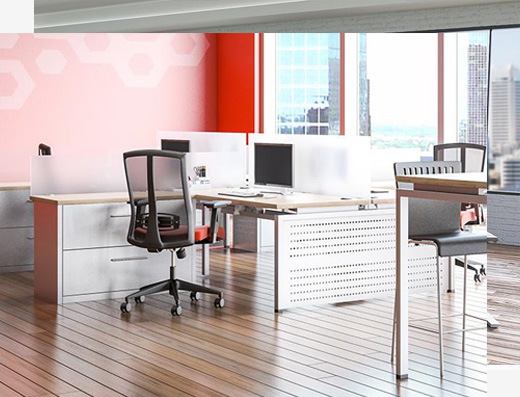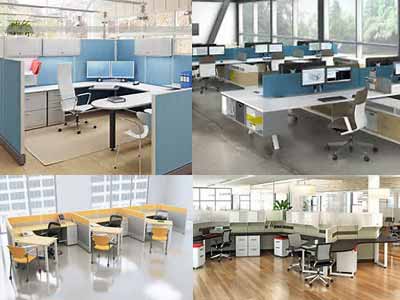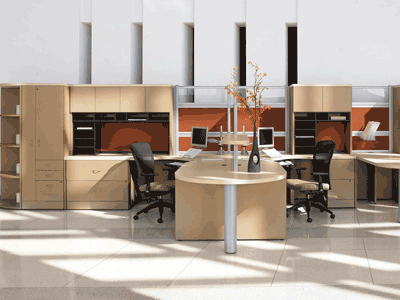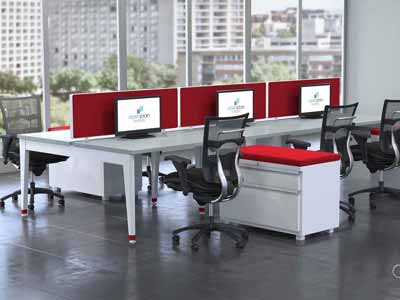 In the modern workplace, the debate between open-plan offices and cubicles continues to spark lively discussions. Each setup offers its own set of advantages and challenges, making it essential for businesses to consider their specific needs before deciding on the best option. Here, we will explore both models to help you make an informed decision about creating an optimal workspace.
In the modern workplace, the debate between open-plan offices and cubicles continues to spark lively discussions. Each setup offers its own set of advantages and challenges, making it essential for businesses to consider their specific needs before deciding on the best option. Here, we will explore both models to help you make an informed decision about creating an optimal workspace.
As workplaces evolve, companies are increasingly adopting hybrid office designs. Studies show that employees thrive in environments that balance collaboration with private workspaces, making hybrid models the future of workplace design
This shift is driven by the need for flexibility and efficiency in modern workplaces. Employees engage in diverse tasks throughout the day—some requiring collaboration, while others demand deep focus. A well-designed hybrid office ensures that workers can seamlessly transition between open spaces for brainstorming sessions and quiet zones for individual work.
The Case for Open Plan
Open plan offices have surged in popularity recently, particularly among creative industries and tech startups. The primary appeal lies in the open space, which encourages collaboration and communication. Employees are no longer boxed in by walls, fostering a sense of community and teamwork that can lead to innovative ideas.

Pros of Open Plan Offices:
- Enhanced Collaboration: With fewer barriers, employees can easily discuss ideas and collaborate on projects. This setup can boost creativity and problem-solving capabilities.
- Flexibility: Open spaces can be easily reconfigured to accommodate different team sizes and project needs. This adaptability is essential in fast-paced, dynamic environments.
- Cost-Effective: Open plan offices often require less investment in construction and materials, making them a cost-effective choice for many businesses.
Cons of Open Plan Offices:
- Noise and Distractions: The lack of walls means that sound travels freely, which can be distracting for employees who need to concentrate.
- Lack of Privacy: Open spaces can make private conversations challenging and limit personal workspace, potentially making employees feel less secure.
- Spread of Illness: With no barriers, germs can spread more quickly, leading to higher sickness rates.
- Decreased Productivity: Some employees may struggle to focus due to interruptions, leading to lower efficiency.
- Overcrowding Issues: In high-density environments, open spaces can feel cluttered and overwhelming.
The Case for Cubicles
Conversely, cubicle offices offer a more traditional approach to workspace design. While they may seem outdated to some, cubicles provide distinct advantages that are hard to replicate in an open-plan setting.

Pros of Cubicle Offices:
- Privacy: Cubicles offer employees a personal space to work without constant interruptions, allowing for higher levels of concentration and productivity.
- Reduced Noise: The partitions help to dampen sound, creating a quieter environment that can benefit tasks requiring focus.
- Personalization: Employees can personalize their cubicles, making their workspace feel more comfortable and conducive to their working style.
- Better Security: Employees can store personal items securely without worrying about them being disturbed.
- Improved Organization: Having a dedicated workspace enables employees to keep essential documents and materials within reach, boosting efficiency.
Cons of Cubicle Offices:
- Isolation: The walls that provide privacy can also lead to a feeling of isolation, reducing opportunities for spontaneous collaboration.
- Less Flexibility: Cubicles are not as easy to reconfigure as open spaces, which can hinder adaptability when team structures change.
- Higher Costs: Constructing and maintaining cubicle partitions can be more expensive than an open plan setup.
- Rigid Environment: A cubicle-heavy office may feel less dynamic and engaging compared to open designs.
- Reduced Visibility: Management may find it harder to oversee teams and ensure engagement.
Finding the Middle Ground
If you're still undecided, consider a hybrid approach that combines the best of both worlds. Modern office furniture offers versatile solutions that cater to open plan and cubicle layouts. This way, you can create spaces for collaboration and private work areas, ensuring employees have the best environment for their tasks.
Hybrid Solutions:

- Zones: Designate specific zones for different activities. Use open areas for collaborative work and enclosed spaces or cubicles for focused tasks.
- Movable Partitions: These can provide flexibility, allowing you to adjust the workspace according to current needs.
- Shared Amenities: Incorporate shared areas like lounges or kitchenettes to encourage interaction without compromising workspaces.
Why Hybrid Offices Are the Future
Hybrid office designs combine the strengths of open spaces and cubicles, offering employees flexibility while maintaining structure. This approach allows businesses to create environments tailored to various tasks, ensuring productivity and collaboration thrive simultaneously.
How to Implement a Hybrid Office:
- Zones: Designate specific zones for different activities. Use open areas for collaborative work and enclosed spaces or cubicles for focused tasks.
- Movable Partitions: These can provide flexibility, allowing you to adjust the workspace according to current needs.
- Shared Amenities: Incorporate shared areas like lounges or kitchenettes to encourage interaction without compromising workspaces.
- Soundproof Pods & Booths: Enclosed pods give employees a space to take calls, attend virtual meetings, or work in silence.
- Hot-Desking: Provide unassigned desks that employees can use as needed, reducing space constraints while promoting flexibility.
- Technology Integration: Smart office solutions, such as room booking apps and digital collaboration tools, help streamline hybrid work environments.
Final Thoughts
Ultimately, the decision between an open plan or a cubicle office depends on your company's unique needs and culture. By understanding the pros and cons of each setup, you can create a workspace that enhances productivity and employee satisfaction. And remember, investing in quality, modern office furniture can make a significant difference, regardless of your chosen layout.
